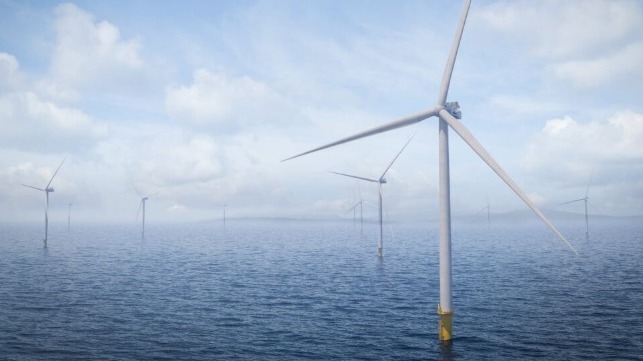U.S. Pushes Forward with Offshore Wind Despite Financial Pressures

The Bureau of Ocean Energy Management (BOEM) announced yesterday that it has completed its environmental review of the proposed massive Empire Wind Farm Project, which would become the U.S.’s largest offshore wind site to gain approval. The Biden administration continues to push forward while developers are looking to reset their agreements to reflect the changing economics for the projects.
“BOEM is doing its part to meet the Administration’s ambitious energy goals – while remaining diligent in our efforts to avoid, minimize, and mitigate impacts to ocean users and the marine environment,” said BOEM Director Elizabeth Klein. “We value the feedback we have received,” she said reporting the bureau plans to issue a Record of Decision on whether to approve the two-phase Empire Wind project this fall. That decision would establish the final conditions for the development, but not address the mounting financial issues which fall to the states.
Empire Wind, which is being developed by Equinor and BP, proposes the construction of two offshore wind projects, known as Empire Wind 1 and Empire Wind 2, in lease areas located about 12 nautical miles south of Long Island, New York, and about 16.9 nautical miles east of Long Branch, New Jersey. The two projects will be electrically isolated and independent from each other.
The approval is good news for Danish turbine manufacturer Vestas which was selected as the preferred supplier for the projects, which call for up to 57 wind turbines for Empire Wind 1 and up to 90 wind turbines for Empire Wind 2. The project plans to use the 15 MW V236 turbines. It would also consist of two offshore substations with two cable routes connecting to the onshore electrical grid on Long Island. Together, the projects are expected to generate up to 2,076 megawatts of energy, which BOEM says would power more than 700,000 homes.
Empire Wind 1 won its tender in 2019 and Empire Wind was awarded in 2021. BOEM published a draft environmental impact statement in November 2021 and then received comments before finalizing the report. A notice of availability is due at the end of this week.
The American Clean Power Association released a statement highlighting these projects saying they would play an important role in the growth of the domestic offshore wind supply chain. Included in these projects is the redevelopment of the South Brooklyn Marine Terminal to become the staging and assembly area.
The companies this summer however cited the dramatic increases in costs, supply chain issues, and the impact of inflation. Saying the projects had become far more expensive, they petitioned regulators at the NY Public Service Commission, part of the NY State Energy Research and Development Authority (NYSERDA) saying the project needed a significant increase in the power pricing agreements. They called for a 35 percent increase for Empire Wind 1 and a 66 percent increase for Empire Wind 2. They are proposing to push the price of energy toward the $200 per megawatt-hour level versus the low $100s that many of the projects were originally bid at when they started their approval process. Other projects such as Sunrise Wind, which Ørsted and Eversource proposed, is calling for a 27 percent increase in its power price.
The U.S. Department of Energy in a recent report acknowledged the changing economics for the offshore wind sector noting after prices had been steadily declining, they have spiked upward due to inflation, supply bottlenecks, and higher financing costs. According to Reuters, approximately 27 power offtake contacts for 17 GW have been signed for the U.S. industry. It is unclear how many will seek to renegotiate their terms.
Developers for two Massachusetts projects have said they will pay large financial penalties to walk away from their projects calling for them to rebid in the state’s upcoming tender. Despite moving forward with a $650 million acquisition to expand its assets and consolidate its position in the U.S. market, Ørsted has also cited the changing finances saying it anticipated taking a large write-down this quarter for the U.S. projects. They have warned that unless the financial issues are addressed, the company could decide not to proceed with large projects in the U.S. that are nearing their financial decisions.
Developers continue to say they believe in the long-term prospects but are calling for changes in the financial structure of the deals to reflect recent pressures. Massachusetts was the first to respond announcing its next tender would permit additional flexibility including bidders can submit an alternative indexed pricing proposal.
